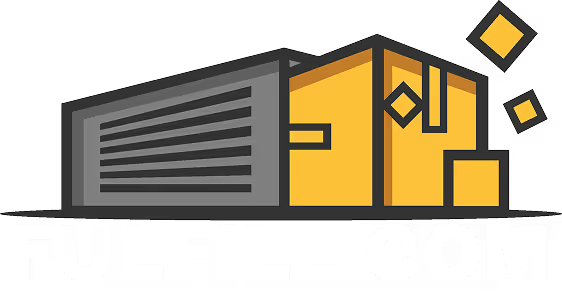Quick Jump
Changing your 3PL provider can feel overwhelming, but this guide makes it simple.
Learn how to plan, manage, and execute a smooth transition without disrupting your operations.
Backed by industry expertise, we’ll help you avoid pitfalls, ensure continuity, and set up for long-term growth and success.
5 Signs It’s Time to Switch Your 3PL

Poor Service Quality
Frequent errors in fulfillment, like delayed shipments or damaged goods, can harm your brand’s reputation. Customers lose trust in your business, leading to lower satisfaction and repeat sales. A reliable 3PL should consistently deliver quality service to protect your customer experience.
Lack of Scalability
If your 3PL can’t handle increased demand during busy periods, it creates missed opportunities and puts strain on your operations. A scalable service provider should adapt to your needs. They need to support service during high-demand times, seasonal spikes, or long-term growth.
Outdated Technology
Relying on outdated systems or a lack of integration with modern platforms can slow down your operations and service levels. Without real-time tracking, data analytics, or automation, your business risks falling behind competitors who use advanced technology.
Increased Costs (With No Added Value)
If your 3PL is charging more but not delivering better results, it’s a sign of inefficiency. Rising costs without added value can hurt your bottom line. This means it’s time to explore more cost-effective options that align with your budget and goals.
Frequent Customer Complaints
Issues like late deliveries or incorrect orders lead to unhappy customers and lost loyalty. Frequent complaints signal that your third-party logistics provider isn’t meeting your standards. Staying with them could damage your customer relationships and long-term success.
Recognizing these signs early lets you take proactive steps to find a 3PL provider better suited to your needs. Your business will be better equipped and on track for growth.
How to Choose the Right Time for Transition

Avoid Peak Seasons or Promotional Periods
Transitioning 3PL providers during peak seasons or promotional events can lead to service disruptions and delays. High-demand periods, like holidays or sales campaigns, require seamless operations. Switching providers at these times risk order delays, stock issues, and unsatisfied customers.
Align Timelines With Inventory Restocks to Minimize Disruptions
Timing your transition during scheduled inventory restocks helps avoid gaps in stock or supply chain management. Incoming and outgoing orders will be handled smoothly. It also reduces the chance of errors or delays in fulfillment during the switch.
Collaborate With the New Provider to Create a Detailed Schedule
Work closely with your new 3PL provider to develop a clear transition plan. Set specific timelines, assign responsibilities, and outline critical milestones. A well-coordinated schedule ensures that all parties are aligned. As such, you can minimize downtime and keep operations on track.
Choosing the right time to switch 3PL providers helps avoid risks to your business or customer experience.
4 Simple Steps to a Seamless 3PL Transition

1. Assess and Define Needs
Before switching from your current provider, take time to understand your business requirements:
- Inventory Levels and Growth Goals: Evaluate your current inventory volume and project future growth. This will help assess if the new provider can handle your needs.
- Service Requirements: Define must-have logistics services, such as same-day shipping, reverse logistics, or specialized packaging.
- Distribution Network: Consider your geographic reach and international shipping needs. The new provider should align with your market coverage.
2. Evaluate Potential Partners
Choosing the right 3PL partner is critical for long-term success:
- Technology Platforms: Assess the provider’s tools, such as real-time tracking, automated inventory updates, and reporting features.
- Geographic Reach: Make sure their distribution centers align with your target markets to minimize shipping costs and delays.
- Sustainability Practices: Look for eco-friendly options like carbon-neutral shipping and sustainable packaging to align with your brand values.
3. Develop a Plan
A well-structured plan ensures a smooth transition:
- Timelines and Responsibilities: Set clear deadlines and assign specific tasks to your team and the new 3PL provider.
- Inventory Preparation: Organize and label inventory for the transfer. Make sure everything is accounted for and ready to move.
4. Test Before Full Integration
Pilot programs help the transition go smoothly:
- Run Tests: Start with a small batch of orders to identify and address potential issues before going live.
- Gather Feedback: Collect input from your operations and customer service teams to refine processes and avoid disruptions during full implementation.
With these four steps, you can support a smooth transition to a new 3PL provider while maintaining operational efficiency and customer satisfaction.
Managing Stakeholder Communication
Clear and effective communication is key to a successful 3PL transition. Here are some best practices to keep all stakeholders informed and aligned:
Educating Internal Teams
Internal teams play a vital role in the transition process.
- Highlight Benefits: Educate your team on why the switch is happening and how it will improve operations, reduce costs, or enhance customer satisfaction.
- Explain Changes: Outline the new processes, tools, and expectations so teams can adapt quickly and avoid confusion.
Informing Customers Proactively
Keeping end customers in the loop maintains their trust during the transition.
- Transparency About Delays: Let customers know if there’s a chance of minor delays during the handover period.
- Highlight Improvements: Share how the new 3PL will improve delivery times, order accuracy, or packaging quality to reassure them of better service ahead.
Collaborating With Both 3PL Providers
Smooth communication between the outgoing and incoming 3PL providers facilitates a seamless handoff.
- Coordinate Logistics: Make sure both providers align on inventory transfers, data migration, and fulfillment continuity.
- Share Data and Insights: Facilitate the exchange of historical data, customer preferences, and operational details to minimize disruptions.
Managing stakeholder communication lets you build confidence among teams, customers, and partners for a successful transition.
3 Common Pitfalls to Avoid During 3PL Switching
1. Inadequate Data Synchronization
Failing to properly sync data between your outgoing and incoming 3PL providers can cause major issues:
- Inventory Errors: Poor synchronization can lead to mismatched stock levels. This may result in overstocking or stockouts.
- Fulfillment Disruptions: Orders may be delayed or incorrectly processed if critical data, such as SKU details and customer preferences, isn’t transferred accurately.
- Solution: Double-check data migration processes. Conduct thorough audits to ensure everything is correctly synced before the switch.
2. Overlooking Hidden Costs in New Contracts
Hidden fees in a new 3PL contract can lead to unexpected expenses that harm your budget:
- Examples of Hidden Costs: Fees for setup, integration, returns management, or peak season surcharges.
- Impact: These costs can quickly add up, negating any savings from switching providers.
- Solution: Carefully review contracts, ask for transparency in pricing, and compare multiple providers to identify the best value.
3. Not Testing Systems & Integrations Before the Switch
Skipping system and integration testing can cause significant disruptions once operations go live:
- Potential Issues: Problems with order tracking, inventory management, or communication between platforms can disrupt the flow of operations.
- Consequences: These disruptions can lead to delayed orders, unhappy customers, and operational inefficiencies.
- Solution: Run pilot programs and thoroughly test systems before completing the transition. These include integrations with your ERP, eCommerce platforms, and other tools.
Avoiding these common pitfalls supports a smoother 3PL switch. Similarly, it minimizes risks to your operations and customer experience.
Use Data to Track Your New 3PL’s Performance
Once your new 3PL is operational, you need to monitor performance with data to check if the partnership is meeting your expectations. Here’s how you can use KPIs and tools to track their success:
Key KPIs to Monitor
Tracking real-time metrics helps you assess the efficiency and reliability of your new partner:
- Fulfillment Accuracy: Measure how often orders are picked, packed, and shipped correctly.
- Delivery Speed: Track how quickly orders reach customers, focusing on on-time delivery rates.
- Inventory Accuracy: Evaluate how accurately the 3PL manages and reports stock levels.
- Return Processing Time: Monitor how quickly the provider handles returns to maintain customer satisfaction.
- Order Cycle Time: Analyze the time from when an order is placed to when it is delivered.
Tools to Track KPIs
Several tools can help you monitor and evaluate these metrics in real-time:
- Warehouse Management Systems (WMS): Tools like ShipHero or Logiwa provide insights into inventory accuracy, order accuracy, and cycle times.
- Transportation Management Systems (TMS): Systems like FreightPOP or Kuebix track delivery performance and optimize shipping routes.
- Data Dashboards: Platforms like Tableau or Microsoft Power BI allow you to consolidate and visualize KPI data from multiple sources for better decision-making.
- eCommerce Platforms: Shopify, Magento, and similar platforms often integrate with 3PLs to track fulfillment metrics directly.
It’s important to consistently track these KPIs and use the right tools. This way, you can ensure your new 3PL delivers on its promises for long-term success.
How a Dedicated Account Manager Can Drive Success
Proactive Problem-Solving
A dedicated account manager identifies and solves potential problems before they disrupt your operations. They proactively monitor trends, such as seasonal demand spikes or entire supply chain disruptions, and prepare solutions in advance. By understanding your business needs, they create tailored strategies. These include staffing adjustments or alternative shipping plans, to ensure smooth and efficient operations.
Correct Customization
Account managers customize 3PL processes to meet your specific business needs. They make sure that returns management aligns with your policies. By analyzing stock flow and order patterns, they optimize inventory management to minimize waste and improve availability. Additionally, they provide scalable solutions like adjusting processes to support new market expansion or promotions.
Consistent Communication
Clear and consistent communication from an account manager contributes to smooth operations. They provide regular updates with performance reports to keep you informed about key metrics like fulfillment accuracy and delivery times. Acting as a reliable point of contact, they help resolve issues, answer questions, and implement necessary adjustments. Similarly, account managers foster collaboration by serving as a link between your business and the 3PL team.
Having a dedicated account manager ensures your 3PL partnership remains proactive, personalized, and efficient.
Fulfill.com Makes the Transition Easy
Switching 3PL providers can be a daunting task. Luckily, Fulfill.com makes the process simple and effective.
A great example of this is Elm Dirt, an eCommerce brand specializing in organic gardening products. With Fulfill.com’s guidance, they successfully transitioned to a new 3PL.
The Challenge: Elm Dirt’s previous 3PL struggled to handle their growing order volumes. This lead to frequent fulfillment errors, delayed shipments, and customer complaints. The provider also lacked scalability to support seasonal demand and relied on outdated technology with poor communication.
Fulfill.com’s Solution: Fulfill.com stepped in and matched Elm Dirt with an experienced 3PL that manages high-volume, niche products. The transition proved easy and efficient. Fulfill.com coordinated inventory transfers and ensured the new 3PL’s warehouse management system was integrated with Elm Dirt’s systems. Throughout the process, Fulfill.com provided ongoing customer support to address any issues quickly.
The Outcome: The results were transformative. Fulfillment accuracy improved by 30% in just three months. In addition, average shipping times dropped from five days to two. The new logistics partner also handled a 50% surge in orders during the busy spring gardening season, demonstrating scalability and reliability.
With Fulfill.com’s expertise, Elm Dirt resolved their operational challenges. In addition, they improved customer satisfaction and positioned themselves for continued business growth.
Moving Forward with the Right 3PL
Choosing and transitioning to the right 3PL provider is a critical step in aligning logistics operations with your business goals.
A 3PL that offers scalability, advanced technology, and excellent service can upgrade your operations and help you stay ahead of the competition.
Regularly evaluating your logistics provider ensures you’re not just meeting current demands but also positioning your business for future growth. Take control of your logistics strategy and set your business up for long-term success.
Need help finding the perfect 3PL? Fulfill’s 3PL Finder connects you with the ideal partner for your unique needs, making the transition simple and stress-free.










